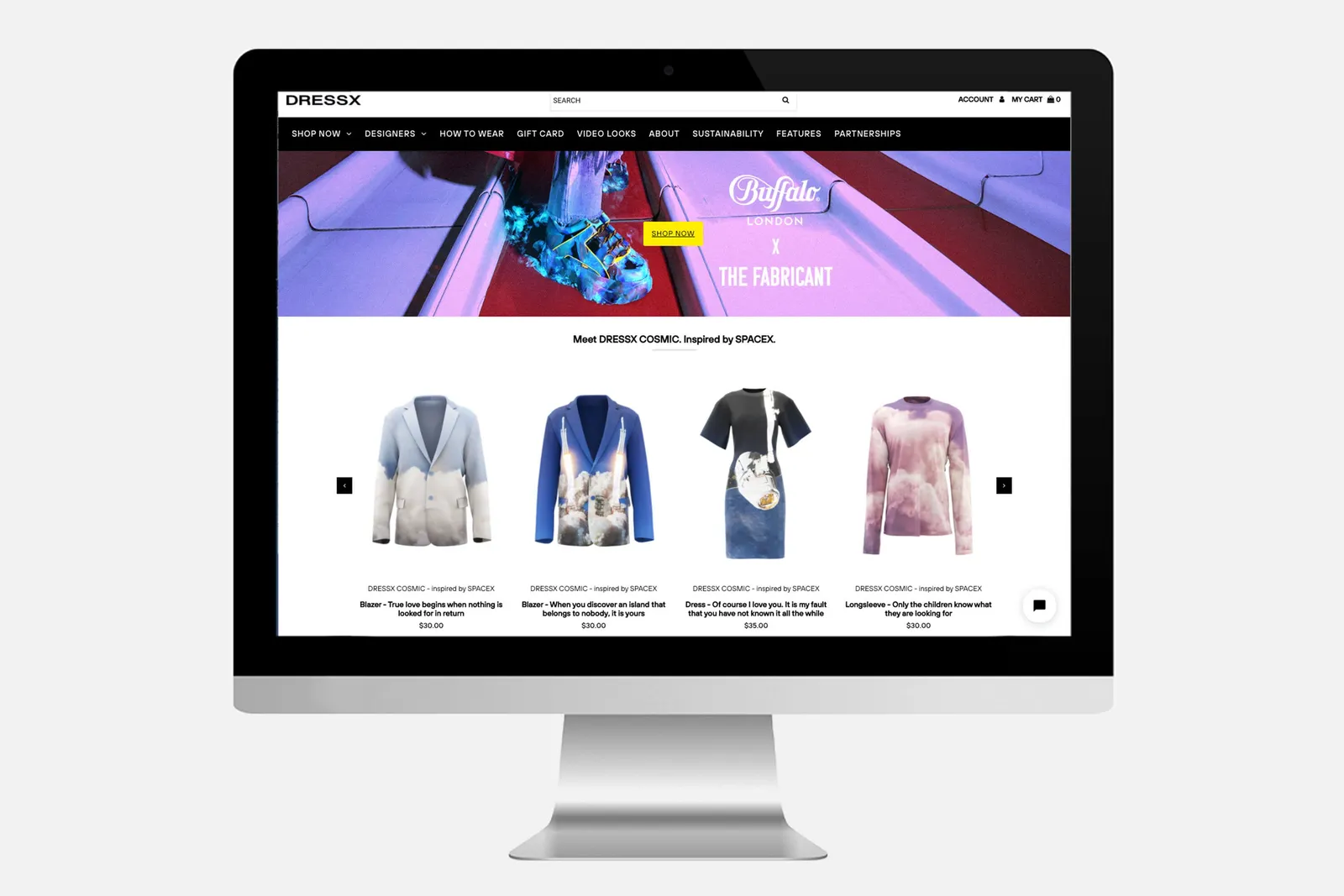This article will guide you through some popular digital fashion marketplaces.
Digital fashion marketplaces 101
There are two types of digital fashion marketplaces: those that sell NFTs, and those that sell 3D clothes.

Digital clothing stores operate in the same way as do regular online stores – you browse through the products, choose what you like, have a closer look, and then pay for it. Usually, the next step will be getting a parcel with your order, except that you won’t actually get anything material this time. You have purchased a virtual version of an item, which can only be used in the digital space: social networks, video games and other AR platforms.
Such marketplaces not only provide young digital fashion designers with an opportunity to make a statement and present their virtual collections to potential customers, but also introduce consumers to new talents and fuel their interest by encouraging them to “try on” some fresh, brave, and sometimes surreal outfits.
Popular digital fashion platforms
DressX
DressX is one of the most talked-about venues with the largest number of designers available — from young talents in digital fashion to world-famous brands that sell digital versions of their creations.

DressX was launched in August 2020 by Daria Shapovalova and Natalia Modenova and is now based in California.
The store offers a broad assortment of digital clothing in various styles: from couture blouses and dresses with futuristic elements to minimalistic hoodies and trendy crop tops. Pick whatever you’d like to try on, upload your photo, and let 3D specialists use some IT magic to fit it on you. The whole process takes about 24 hours.

DressX also has its own app where you can try on virtual clothes using AR technologies in real-time.
XR Couture
XR Couture is an international digital platform founded in 2020 by Subham Jain. The company aims at reducing the environmental damage caused by the fashion industry by switching the focus to virtual fashion.

XR Couture is a go-to for digital fashion rookies, as it has quite affordable prices and offers a wide range of fitting options.

XR Couture allows you to upload a number of photos for experts to choose from to get the best final result. It’s very convenient since it is not always clear how this or that digital item will fit on a photo.
Replicant and Artisant
Replicant is a Russian digital clothing marketplace founded by Regina Turbina. She became the first digital clothing designer in Russia to sell digital outfits.

Turbina has also created the Artisant NFT platform. As of today, it’s the only marketplace that specializes in digital fashion NFTs alone.
Collectors can resell fashion NFTs via their personal account on the platform, all trade confirmations are done through smart contracts. Transactions are made in Ethereum only.

The Dematerialized
The Dematerialized is a digital clothing marketplace focused exclusively on luxury brands. The trading platform is based on the LUKSO blockchain.

This Berlin-based startup was created by Marjorie Hernandez and Karinna Nobbs. The project cooperates with loud-name brands one at a time to release up to 150 pieces of clothing. The Dematerialized has already worked with Balenciaga, Tribute Brand, Rebecca Minkoff and the annual British Fashion Awards ceremony.
Karl Lagerfeld released his first NFT collection in The Dematerialized, which became the fashion house’s first blockchain experience.

The Dematerialized offers you various options of ways to “wear” the items: you can try on outfits using a Snapchat filter, overlay the purchased clothes on a photo or use the virtual items bought for your avatar in a computer games (e.g. Sansar, VR CHAT and Decentraland).
Some other fashion NFT marketplaces to check are:
- Rarible
- Foundation
- SuperRare
- Nifty Gateway
- OpеnSea
With the market still emerging, trading platforms have already started to compete for the title of Farfetch or Net-a-Porter of digital fashion. The field is expected to rise and shine in future as not only it has a potential to become a new source of income for fashion brands and designers, but also is highly sustainable, which is a key to success in a world that strives for net zero.



